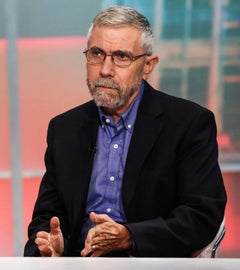MI SELECCIÓN DE NOTICIAS
Noticias personalizadas, de acuerdo a sus temas de interés

What Mr. Grossman and Mr. Hopkins do is try to document the very real differences in the two parties’ structures - not in terms of value judgments, but in terms of how they work: “Scholars commonly assume that the American left and right are configured as mirror images to each other, but in fact the two sides exhibit important and underappreciated differences,” they write. “We argue that the Republican Party is the agent of an ideological movement, while the Democratic Party is best understood as a coalition of social groups.”
The next question, which they really don’t answer, is why. And I find myself thinking about Karl Marx.
I don’t know how many people read “Capital” these days, and to be honest I don’t recommend it unless you’re a historian. But I’ve always been struck by the very last chapter, which takes on the issue of class. Marx declares that workers, capitalists and landowners are the three great classes, and that they are so defined in part by shared economic interests. But he identifies a problem: “However, from this standpoint, physicians and officials, e.g., would also constitute two classes, for they belong to two distinct social groups, the members of each of these groups receiving their revenue from one and the same source. The same would also be true of the infinite fragmentation of interest and rank into which the division of social labor splits laborers as well as capitalists and landlords - the latter, e.g., into owners of vineyards, farm owners, owners of forests, mine owners and owners of fisheries.”
So why aren’t physicians and officials, and vineyard owners and mine owners, different classes, given the divergence of at least some of their interests? We turn back to Marx’s book for the explanation, and find this note: “(Here the manuscript breaks off)” Oops.
What does all this have to do with partisan asymmetry? The Democratic Party looks like the class system that Marx said was wrong, without ever getting around to telling us why. It’s a coalition of teachers’ unions, trial lawyers, birth control advocates, wonkish economists and others who often find common ground but who are by no means guaranteed to fall in line. The Republican Party, on the other hand, has generally been monolithic, employing an orthodoxy that nobody dares question. (Or that nobody dared question until Donald Trump came along, which is why the establishment thinks that saying “but he’s not a true conservative!” can make the nightmare go away.)
So why are the parties so different? Well, the answer is (Here the manuscript breaks off).
O.K., not really. But it is a puzzle. I do think that “wingnut welfare” - or all the jobs at right-wing think tanks and media organizations that are always available for loyal spear carriers - is part of the story. But there has to be more.
Any suggestions from real political scientists would be especially welcome.
El gobierno decidió acabar su financiación de Colfuturo, una entidad que por más de 30 años brindó a más de 25,000 colombianos la oportunidad de estudiar posgrados en el exterior. Decidieron hacerlo en el momento en que como país necesitamos mirar hacia afuera
Le prometemos que este año será más ligera, que la subiremos por un camino más corto o que, finalmente, lograremos que se quede quieta en la cima
En el sector agroindustrial, el clúster de café muestra cómo los encadenamientos productivos permiten avanzar hacia mercados de mayor valor